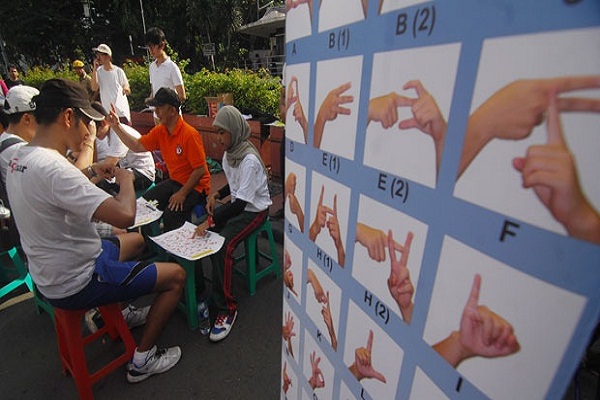Sign Language Translations for Deaf at Indonesian Mosque

“We started this blessed initiative with a sum of five experienced sign language translators who are now available at the mosque. They have plenty of experiences in sign languages,” said Abdullah, a member of the Jamaah Tabligh.
The services, offered at At-Taqwa Grand Mosque, are planned to assist those willing to memorize and recite the Quran.
One of the sign language translators, Hariri, said: “the deaf congregation community has been regularly attending religious courses at this mosque since 2013. Among the deaf worshipers, there are bachelors, graphic designers, and teachers at special schools for handicapped children.”
He added that “there were 70 deaf and disabled people in Lombok island who had participated in the congregation Da’wah program.”
The events of the program usually take place every Friday night and about 30 people attend regularly. Most of them are members of the Movement for Deafness Welfare (Gertakin) in Mataram region.
“Alhamdulillah, the Islamic courses can be a means of interacting with the outside world for the deaf community,” he said.
A member of the deaf community named Azmi regularly participates in the activity. He works as a teacher at Praya State Special School (SLBN).
“I regularly take part in this Quran recitation program. I even invite my students to take part in these activities,” he said happily.
Sign languages, also known as signed languages are languages that use the visual-manual modality to convey meaning. The language is expressed via the manual sign stream in combination with non-manual elements.
This type of languages are full-fledged natural languages with their own grammar and lexicon. This means that sign languages aren’t universal or mutually intelligible, although there are also striking similarities among sign languages.
Linguists consider both spoken and signed communication to be types of natural language, meaning that both emerged through an abstract, protracted aging process and evolved over time without meticulous planning.
In fact, you shouldn’t confuse a sign language with body language, a type of nonverbal communication. The 2013 edition of Ethnologue lists 137 sign languages in the world.
Source: About Islam
 Most Commented
Most Commented 


